探究课程(Unit of Inquiry/UOI)是我校融合部最受小朋友欢迎的课程之一,它注重培养学生的创造力、行动力和独立思考的能力,是IB的核心课程。一个学期的探究课程一般包括三个单元,每个单元都有自己的主题和中心思想,比如今年四年级上学期的探究课程即包括“价值观”、“建筑”、“发明”三个单元。
Units Of Inquiry is one of the most popular parts of the curriculum among the students in PYP Section. It focuses on developing the students' creativity, action and independent thinking. It is a framework from IB. There are three units each semester. Each unit has its own theme, central idea and lines of Inquiry. This year in Yr4 the three UOI units in the first semester included “Values", "Architecture" and "Inventions”.

那么,融合部四年级的小朋友们最近正在开展怎样的探究课程呢?让我们一起走进课堂看一看。
How do the Yr4 students do the UOI ? Let’s take a look at it.
目前正在进行的单元以“建筑”为主题,围绕“建筑反映了文化和创造力”这一中心思想设计各项探究活动。单元探究的目标是让学生了解不同时代的建筑风格,学会欣赏建筑中的艺术细节;让学生了解一些本土建筑及这些建筑的功能;让学生了解建筑师在设计时考虑的因素及设计理念,学会设计一些简单的建筑模型。
Currently the students are doing the Architecture Unit. It reflects the culture, creativity and practibility of designing structures. All kinds of activities are designed to increase the students understanding of how and why things are built. The aim is to let the students know about different styles of architecture and encourage them to admire details of the art. The students learned about the function of some local architecture and the elements that should be considered while designing the structures. They learn to design some simple models of architecture.
单元引入时,借助高科技地图,孩子们在课堂上享受了一次 “飞跃地平线”的视觉盛宴,跟着老师“游”遍了世界各地的地标性建筑。同时,我们也有幸邀请到了同济大学设计创意学院的教授为孩子们带来近两个小时的精彩讲座。教授饶有兴致地为孩子们介绍了很多中西方著名建筑以及建筑背后的故事,比如上海中心是如何设计建造的,还介绍了中西方建筑的文化特色,从中国的榫卯、斗拱、瓦当到西方的拱券、穹顶、爱奥尼柱,从中国的古典四合院、宫廷建筑到西方的哥特式教堂、巴洛克园林,娓娓道来,让孩子们对建筑艺术产生了浓厚的兴趣。
The Tuning-in part is based on a high-tech map. The students had a visual feast of “flying from the horizon” in the class. They visited with the guidance of the teacher, some typical landmarks all over the world. Meanwhile, we invited a professor from Tong Ji University to have a wonderful lecture for nearly two hours. The professor introduced many famous Chinese and Western architecture and the stories behind them. The professor answered our questions about the design of the Shanghai Tower. She also introduced typical features of Chinese and western culture, from the classical Chinese Arch, to Western Gothic Cathedrals and Baroque Gardens which aroused the students’ interest a lot.
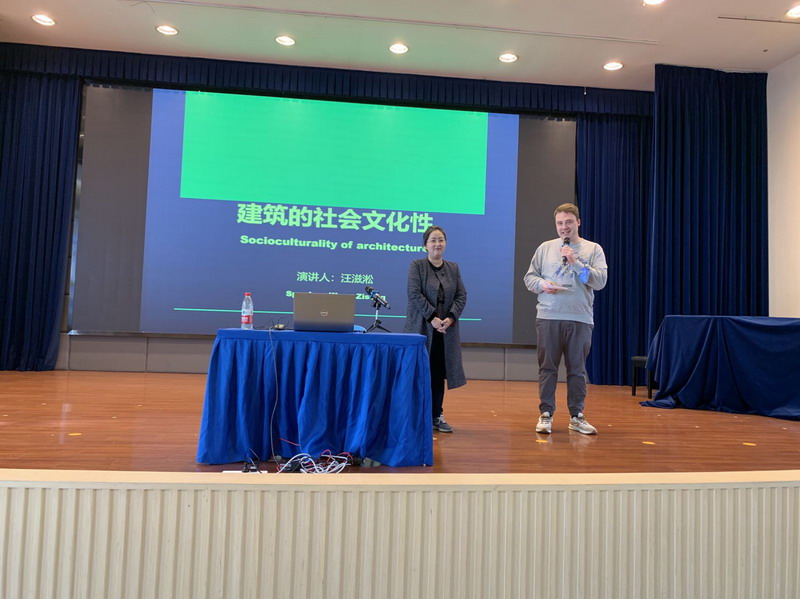
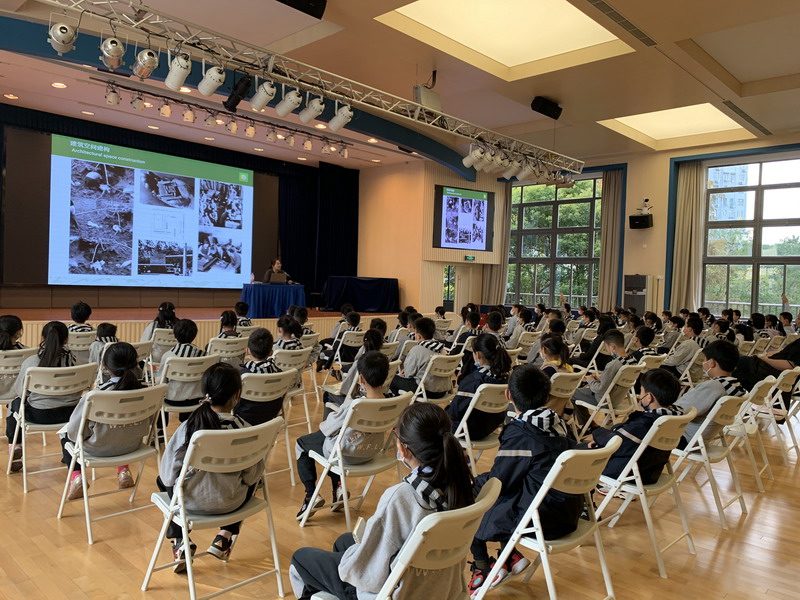

人们的需求决定了建筑的功能,所能获得的建筑材料决定了建筑的形式。在寻找合适的建筑材料环节,老师积极引导,通过实验,一方面充分发挥小朋友们的创造力,另一方面让他们对各种“建筑材料”的特性有一个直观的感受。比如在检验材料的稳定性和坚固性的时候,老师让孩子们用A4纸与意大利面、棉花糖做了两个小实验,通过比较,他们发现用一张A4纸能搭出的结构不论高度和坚固性都非常有限,而用意大利面和棉花糖就能搭出相对更高、更稳定的结构。这个环节,孩子们知道了好的建筑材料是好的建筑的基础,也让他们知道了为什么那么多的科学家要殚精竭虑,发明更轻、更省、更坚固的建筑材料。
The function of architecture should be catered to the people’s needs. The form of the architecture depends on the materials. Whiling searching for the proper materials, the teachers guided the students to do some experiments to make full use of their creativity and let them know more about the features of all kinds of materials. One example was to test the stability and how solid a material could be. The teacher let the students use A4 paper, spaghetti and cotton candy to do two little experiments. Through comparing, they found out that the architecture made of A4 paper no matter how high or stable it is, was very limited. The one made of spaghetti and cotton candy could be higher and was more stable. The students realized that good materials are the base of good architecture. They understood why the good scientists tried their best to invent lighter, and more stable materials.
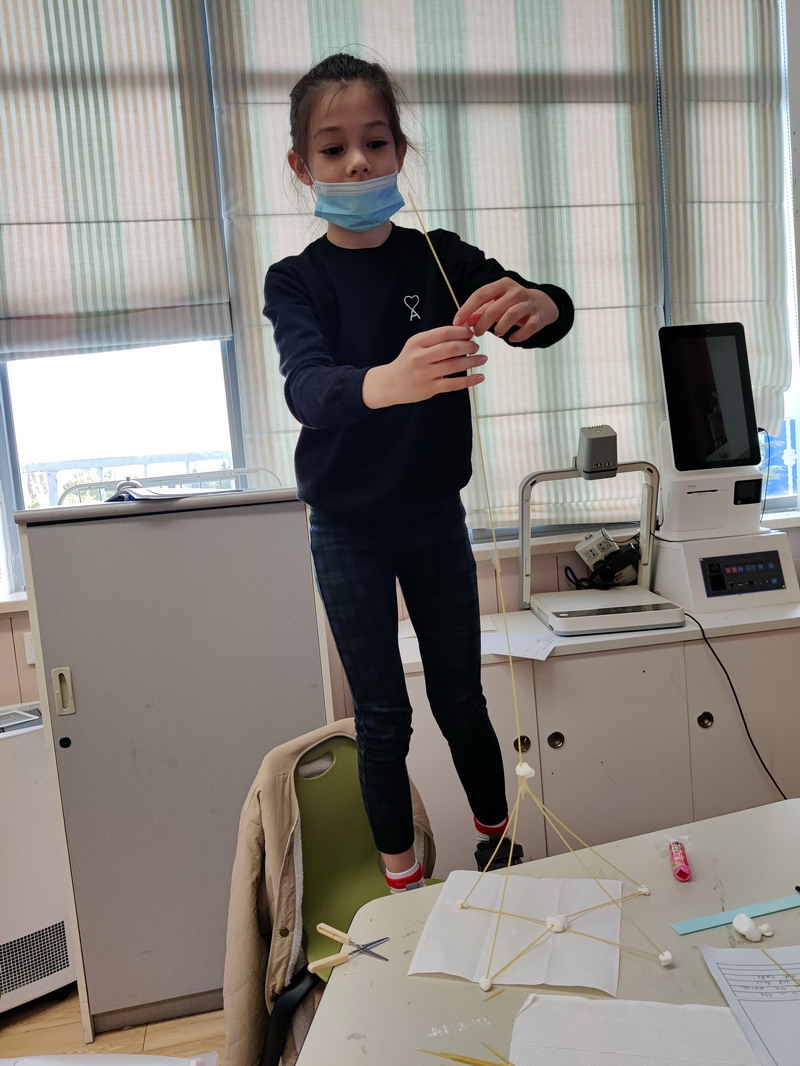

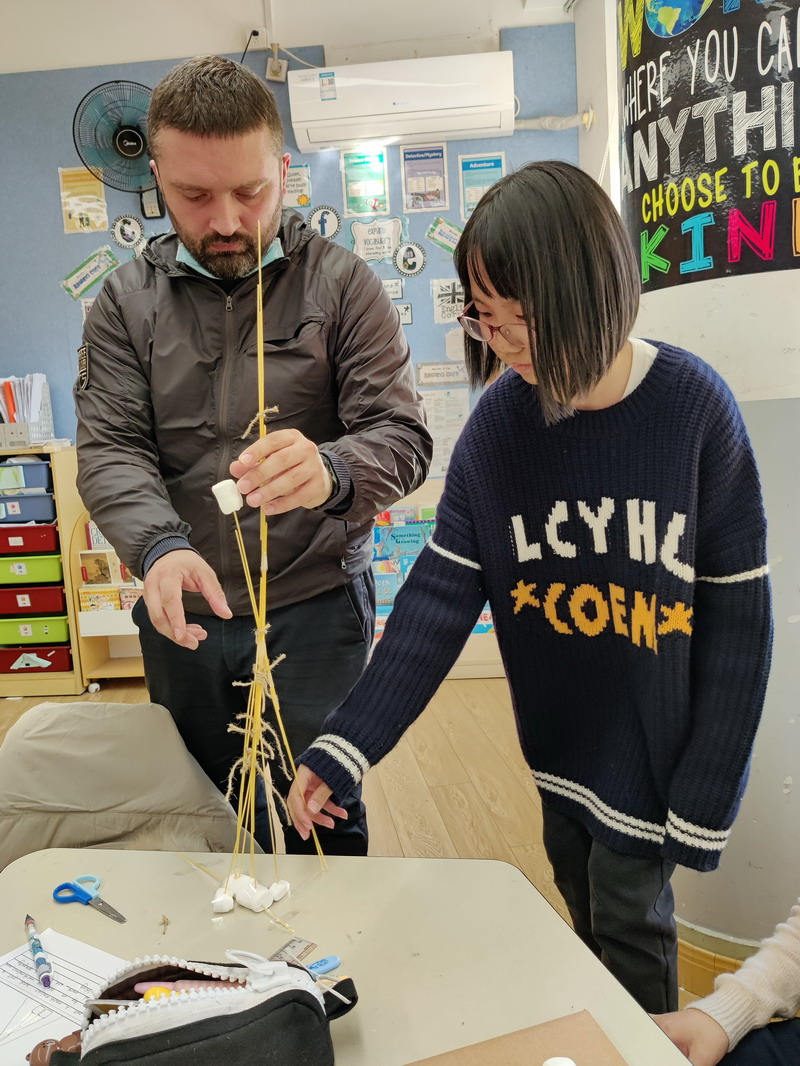
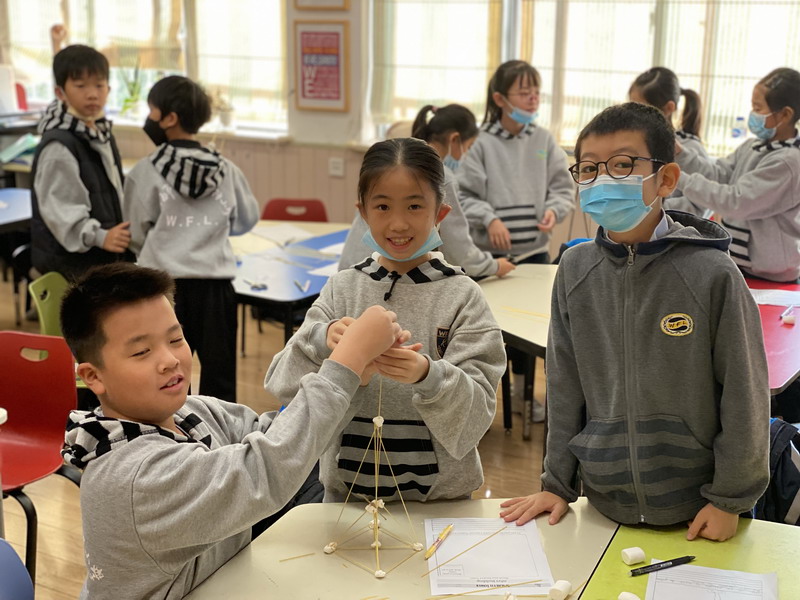
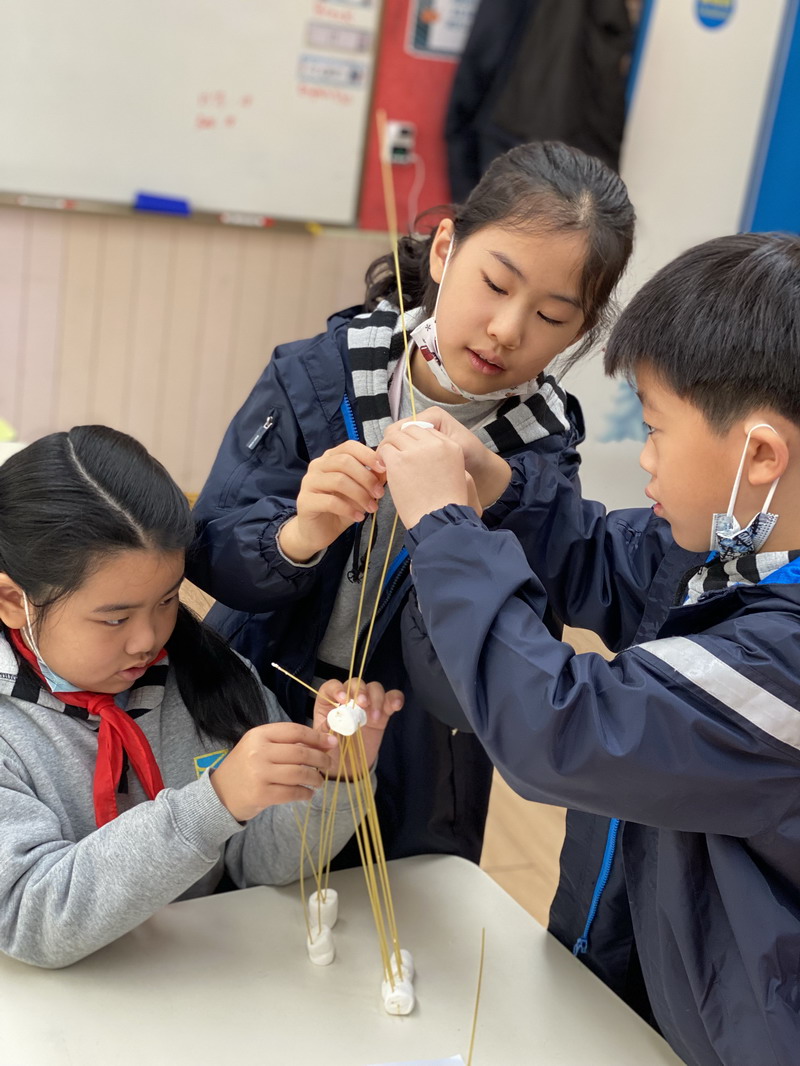
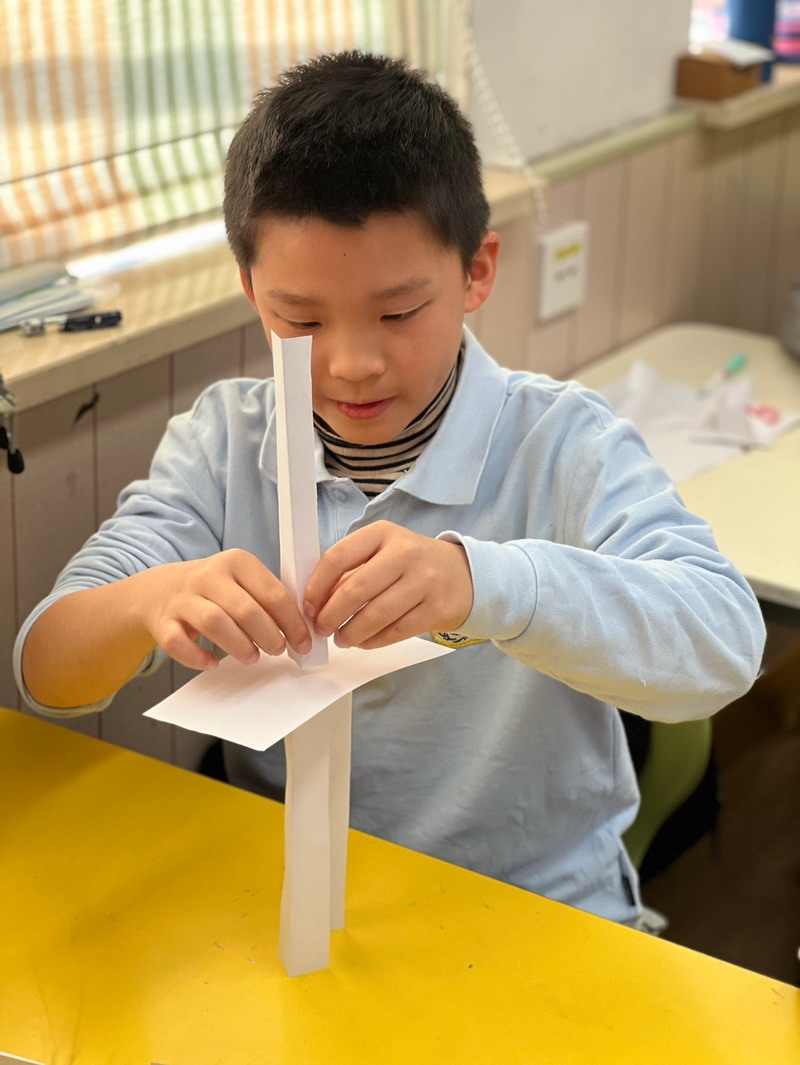
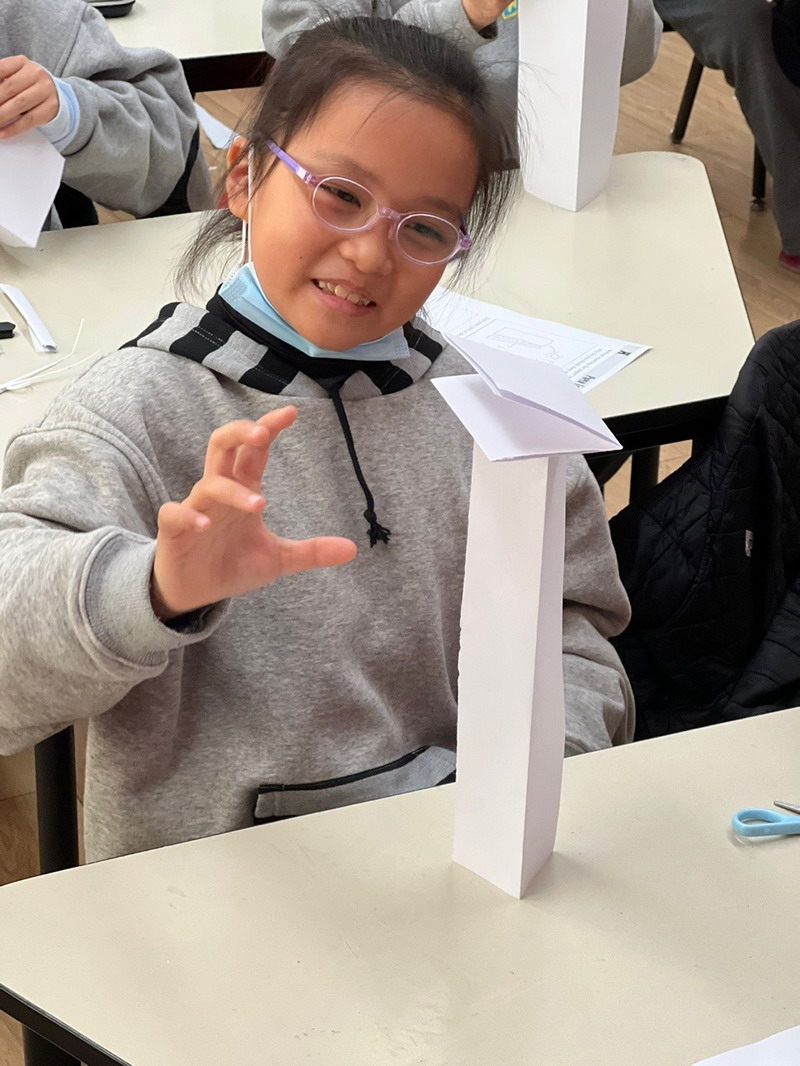
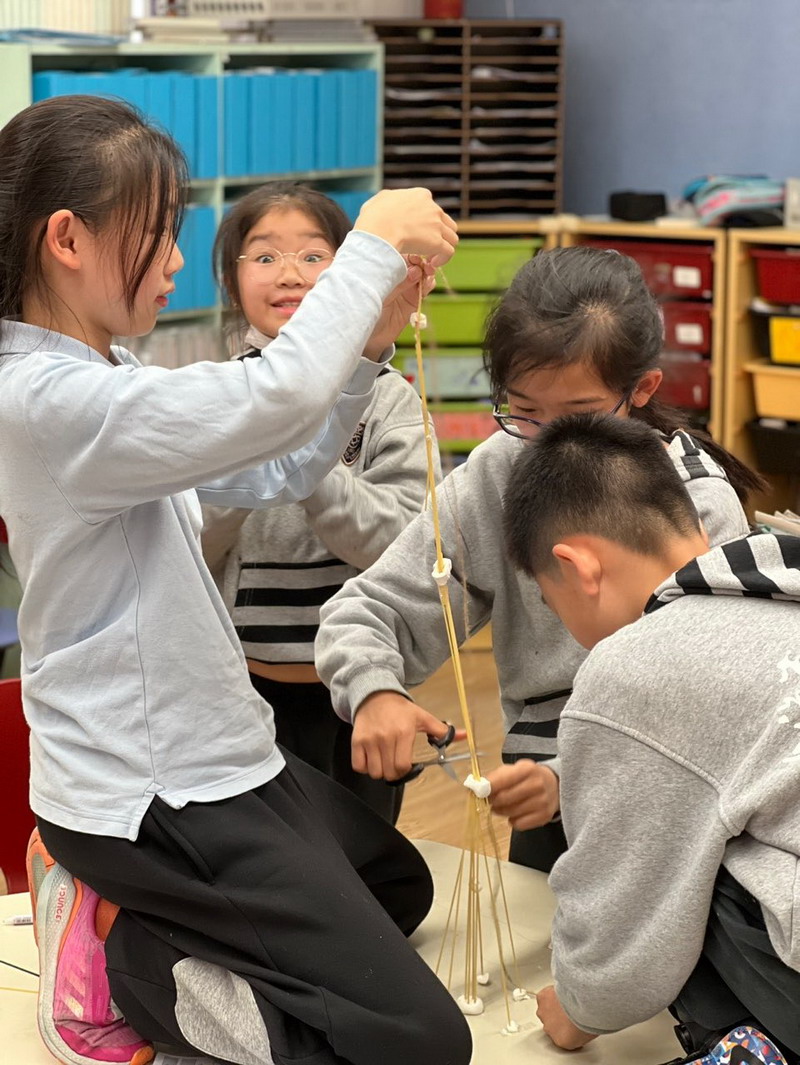
建造一座美观大方、经久实用的建筑,除了前面提到的建筑材料因素之外,还需要考虑那些因素呢?这就涉及更深层级的建筑科学了,在这个“进阶”环节,孩子们知道了设计建筑时,还综合考虑建筑各部分的重力、材料的张力、合理的布局等方方面面的因素,尤其是随着绿色低碳理念的兴起,建筑设计应当在节能环保方面进行着重考量。这个环节,让孩子们知道,设计一座经典的建筑,有其内在的科学知识和基本规律,并不是随随便便就可以成功,让他们真切体会“纸上得来终觉浅,绝知此事要躬行”。
”Besides the materials, what else do we need to consider while building a wonderful practical and durable structure? There was a lot of science behind buildings. The students realized that we need to consider gravity , the tension of the materials and how they were arranged. With the development of green, low carbon material, our architects drew more attention to energy saving and environmental protection. To make a classic structure, there is an internal scientific knowledge and the basic law that must be followed. No one has access to success easily. Actions speak louder than words.
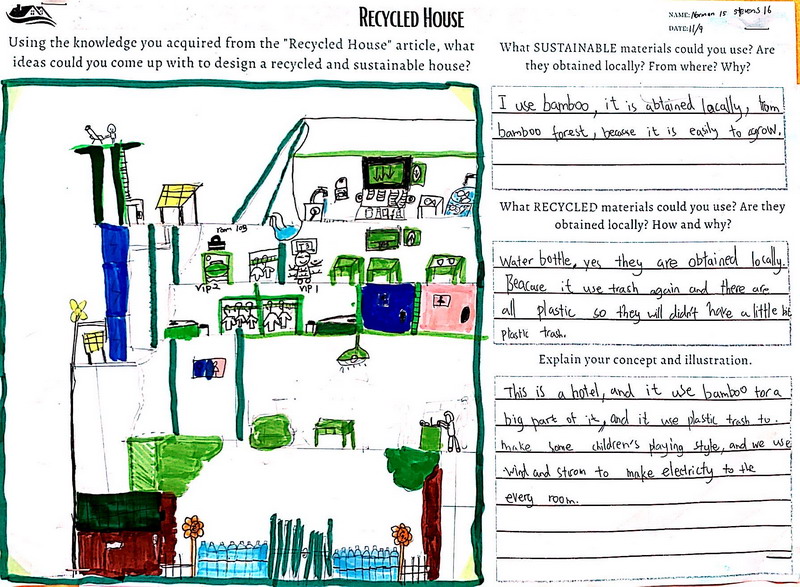
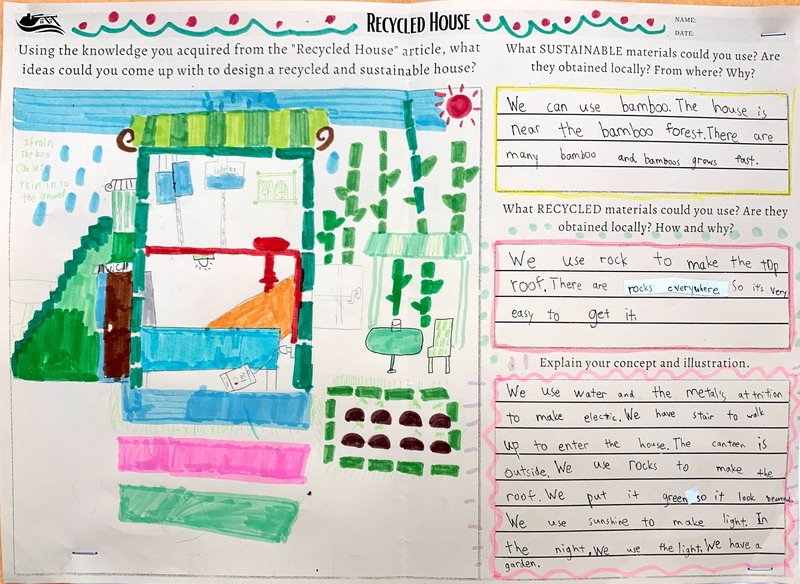
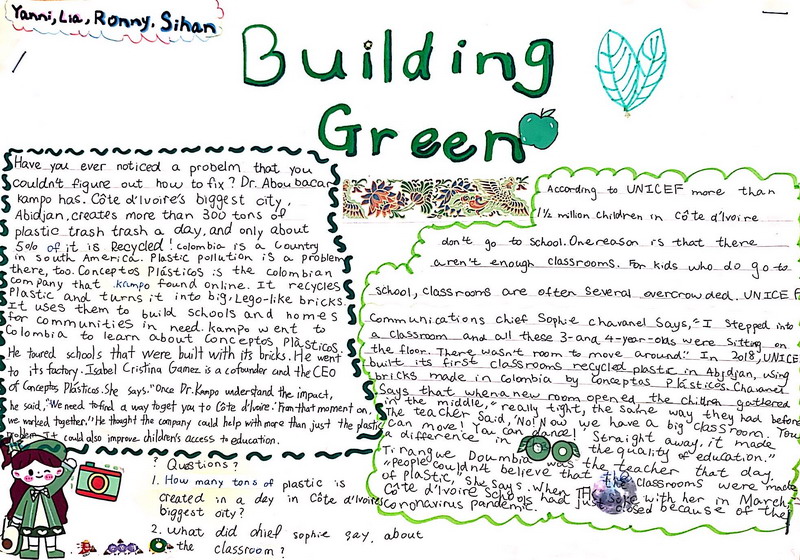
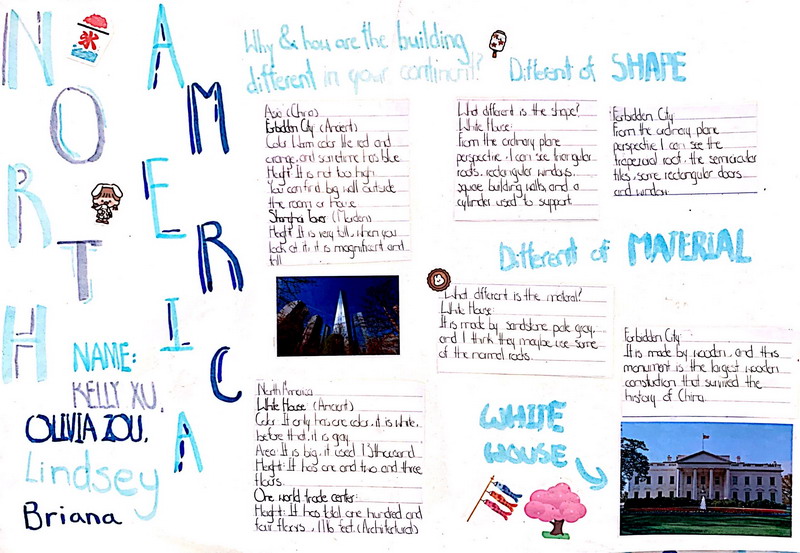

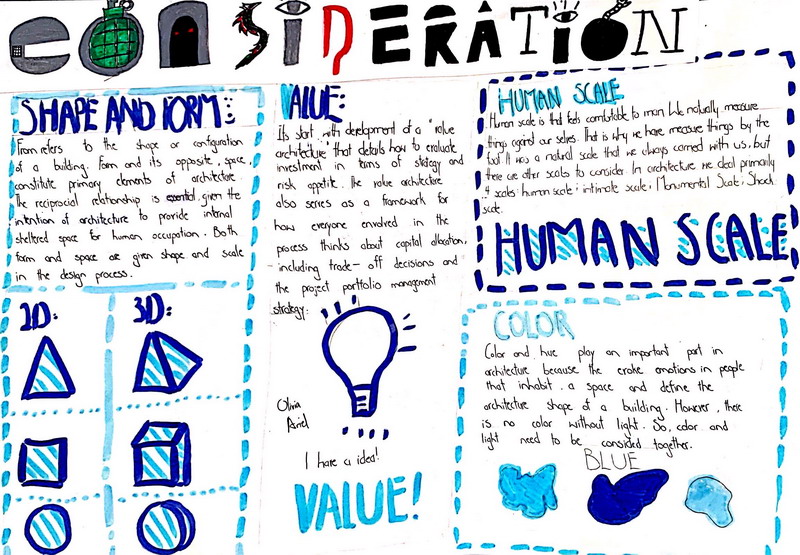
探究单元的终结性评价任务通常是整个单元的重头戏,考验孩子们的创造力、动手能力、表达能力和团队协作能力,这也是一个大显身手的好机会。“建筑”单元的终结性评价任务分小组进行,每组设计一个建筑并做出建筑模型。孩子们要设想将建筑建在一个环境有挑战的特定地方,以使他们知道,建筑不仅要能解决人们的生活需要,还要能经受住“恶劣环境”的测试,比如,建在水底的建筑要经过防水测试,建在地震多发区的建筑要经过防震测试……这个环节,主要是让孩子们将自己天马行空的想象力落到实处,锻炼孩子们的动手能力。The final assessment is the key part of the whole unit. It checks the students’ creativity, hands-on and their expression as well as team cooperation. It is also a good opportunity to show their talents. The Architecture Unit's summative assessment is a group project. Each group has to design a model located in a challenging place in a certain environment. Architecture is not only catering to the needs of people, but also to endure the challenges of the environment. For example, the architecture under the water should be water proof and the ones built in a frequent earthquake area should withstand the shocks. This part helped the students link their imagination with reality and they had a great chance to have some hands on activities!

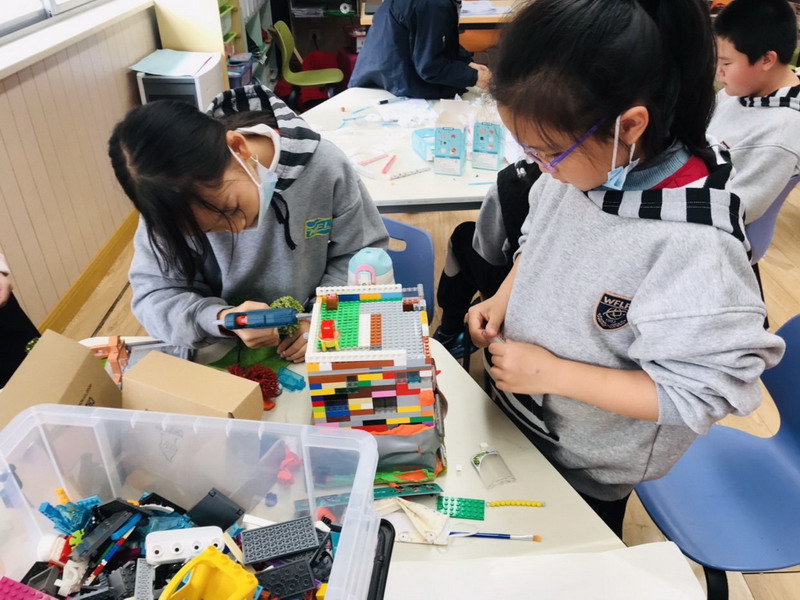
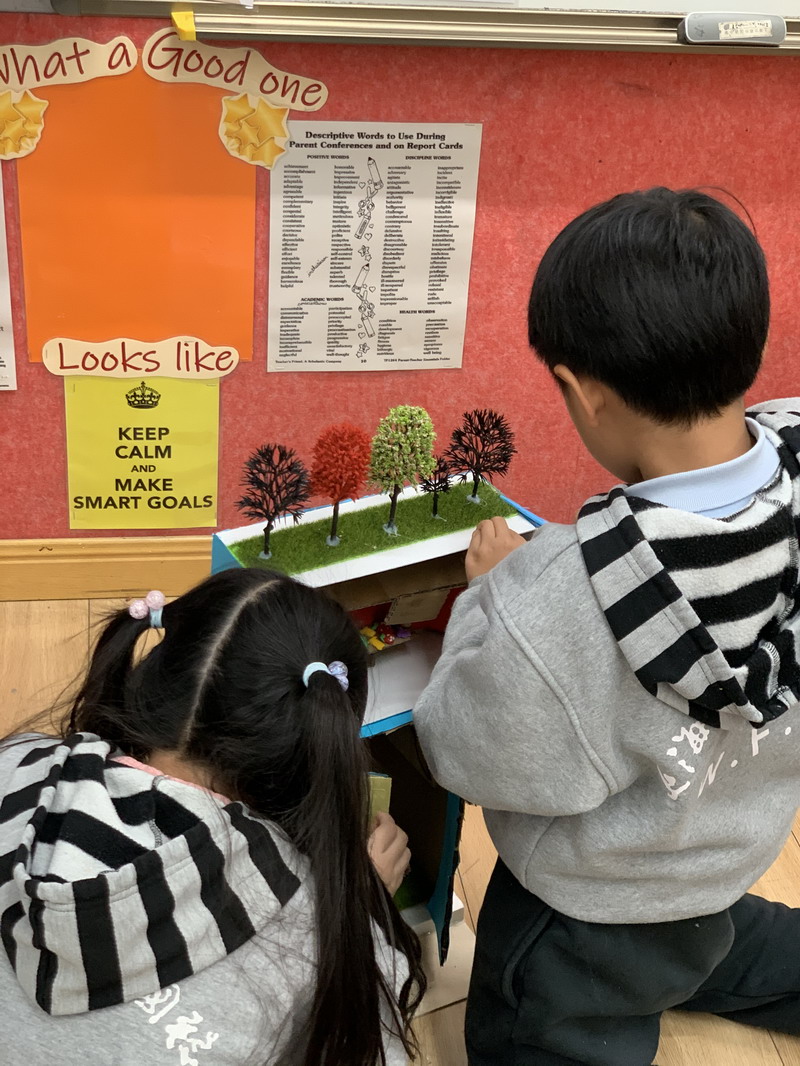
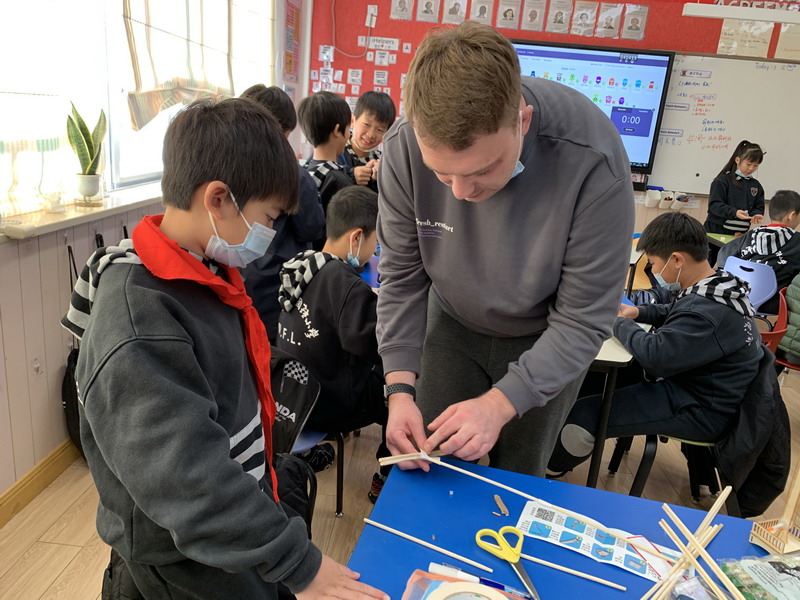
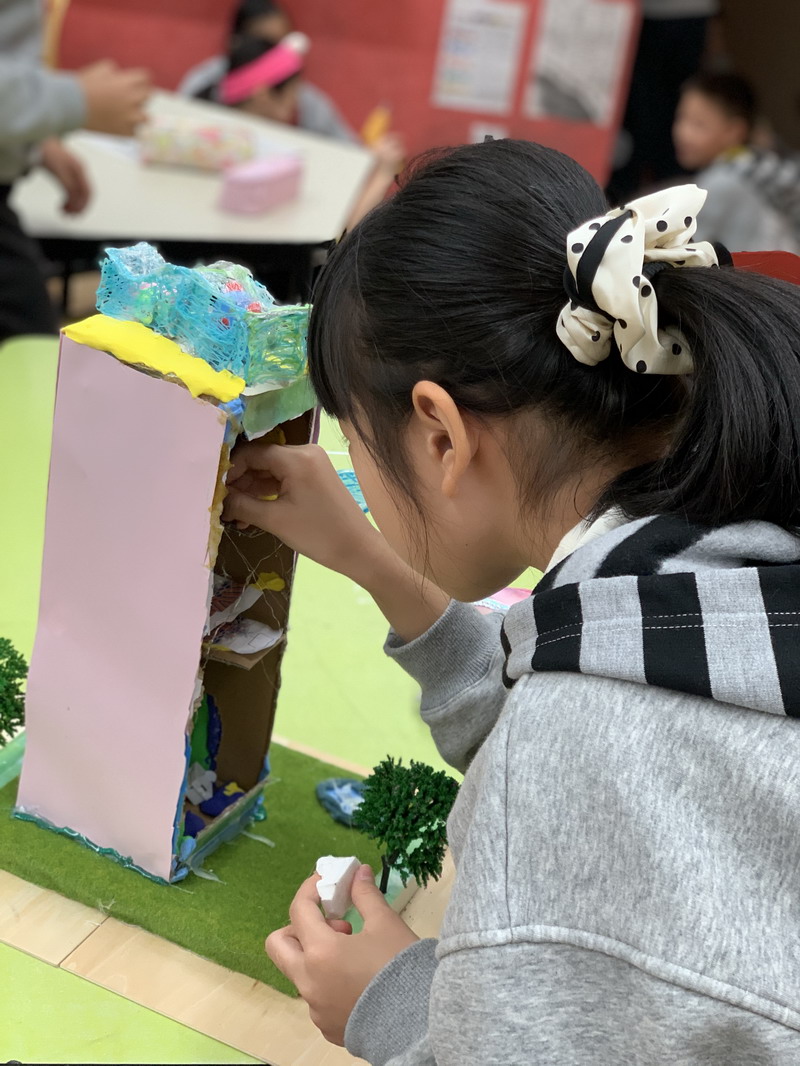




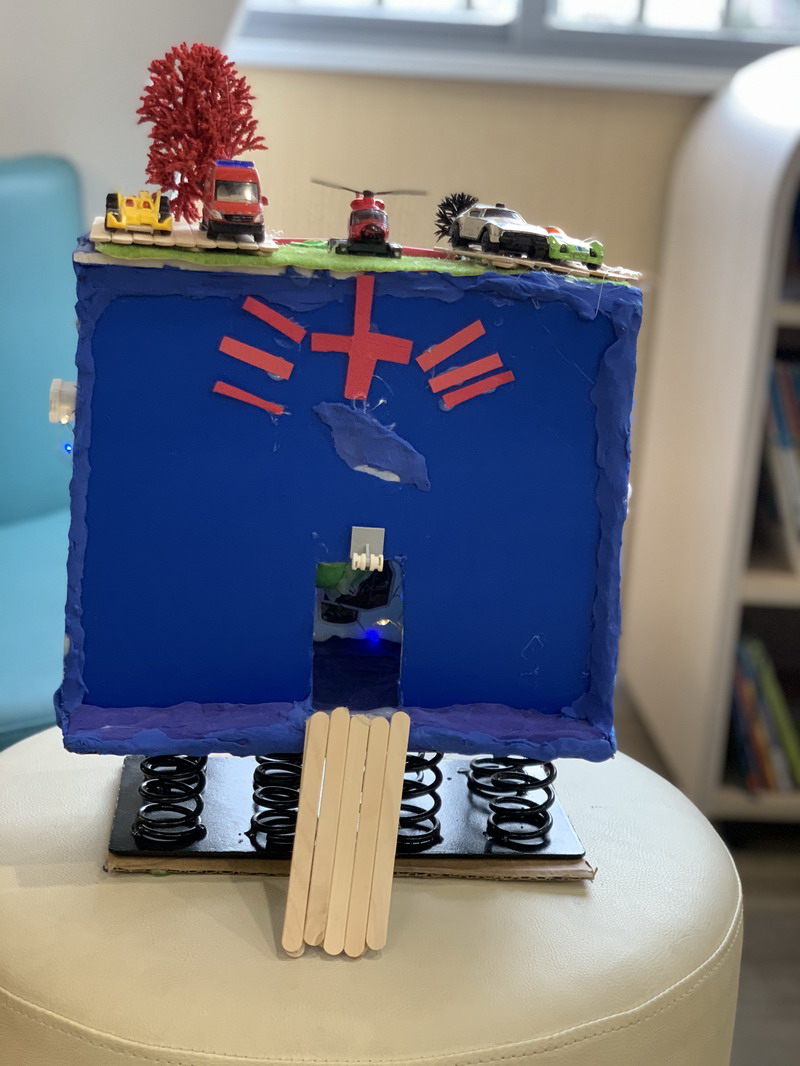
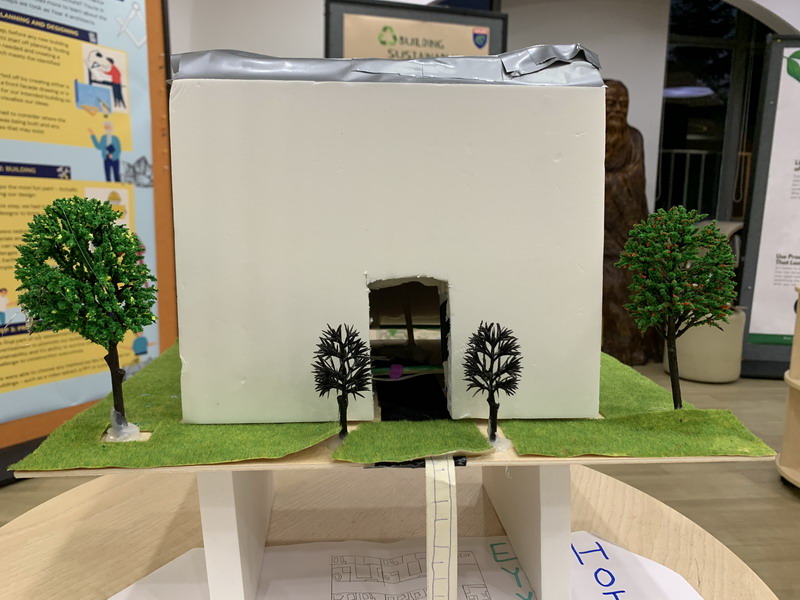
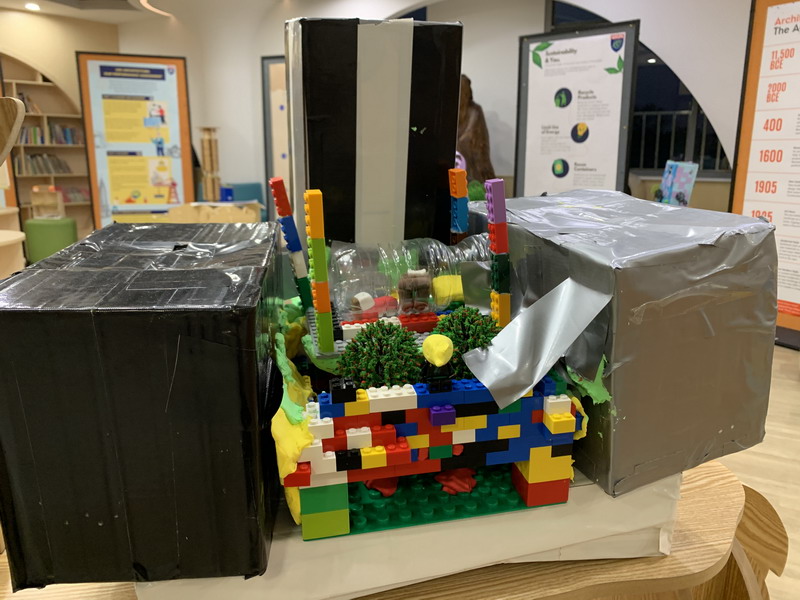
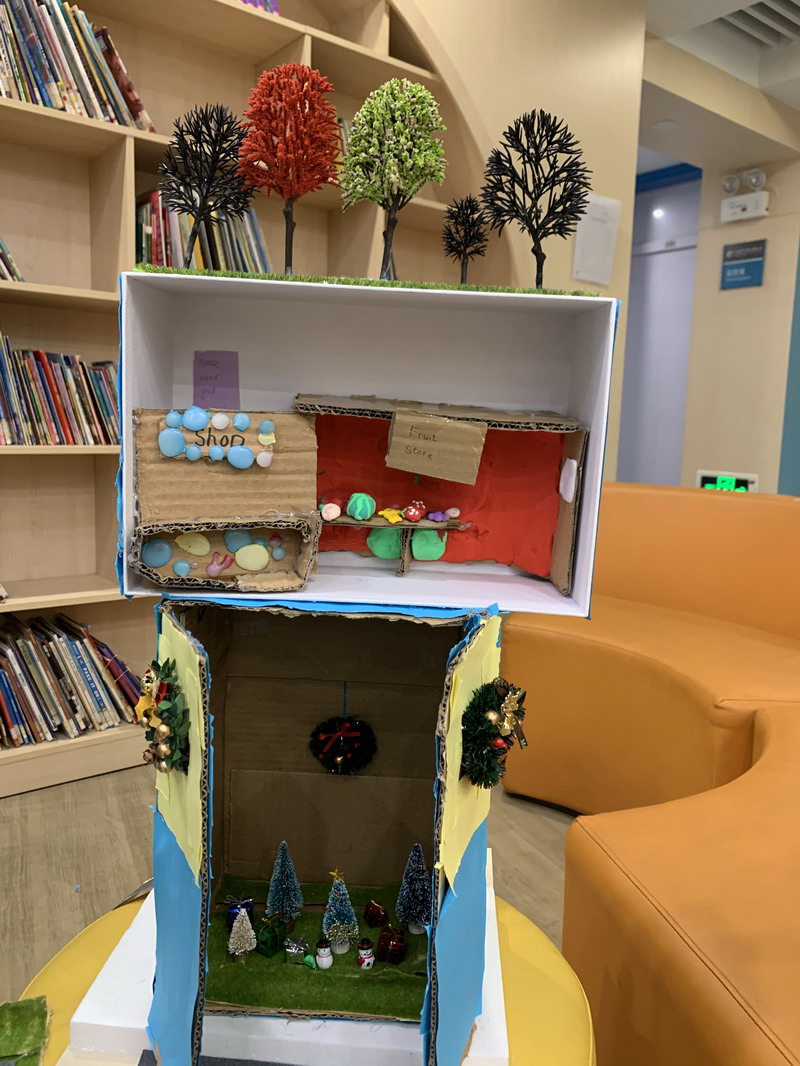
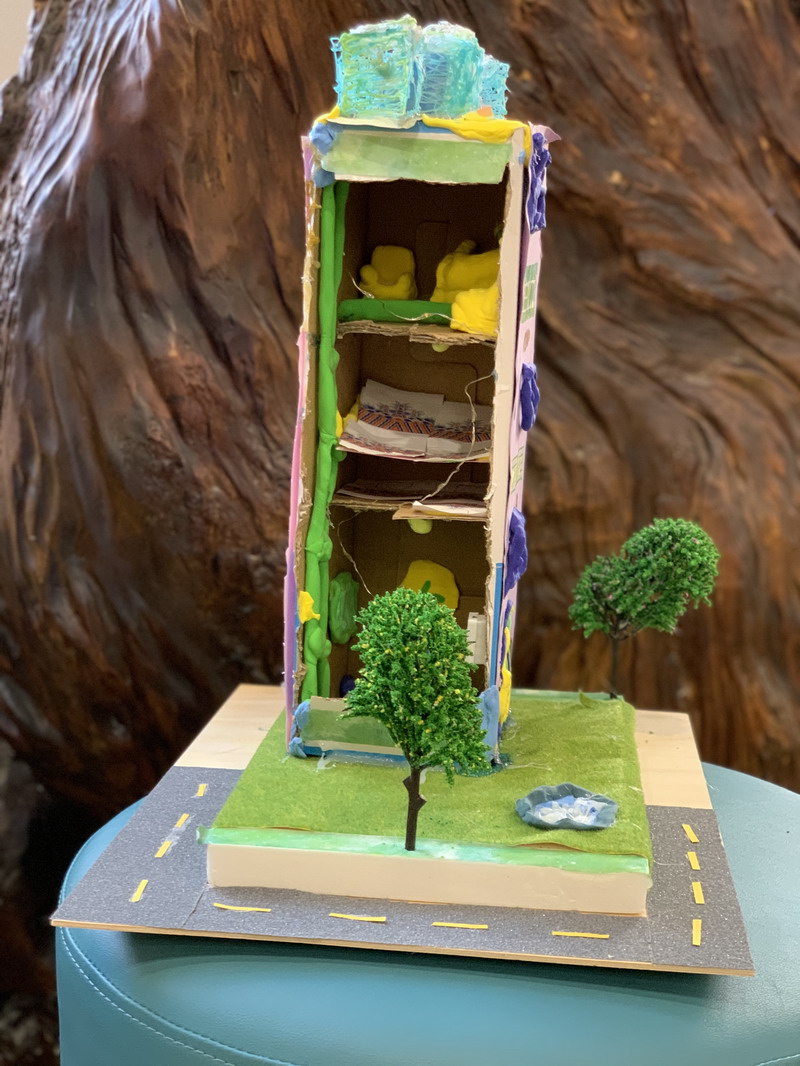
最后,我们将所有的建筑作品布置成一个小型的展览,邀请融合部其他年级的小朋友都来参观我们的作品。小建筑师们为自己的建筑做代言,以海报、视频或PPT演讲的形式宣传自己的作品,详细介绍设计的目的、建筑的特色与功能。
Finally, we displayed the structures as a presentation. We invited PYP Section students from other year levels to visit our displays. The little architects made the posters, videos or PPT's to describe features of their work. They introduced the purpose of the design in detail and the features and function of the architecture.
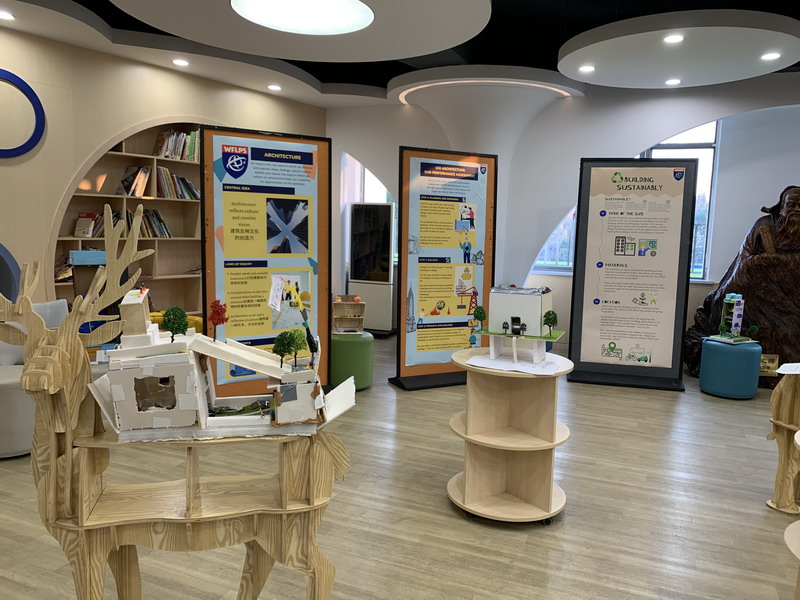
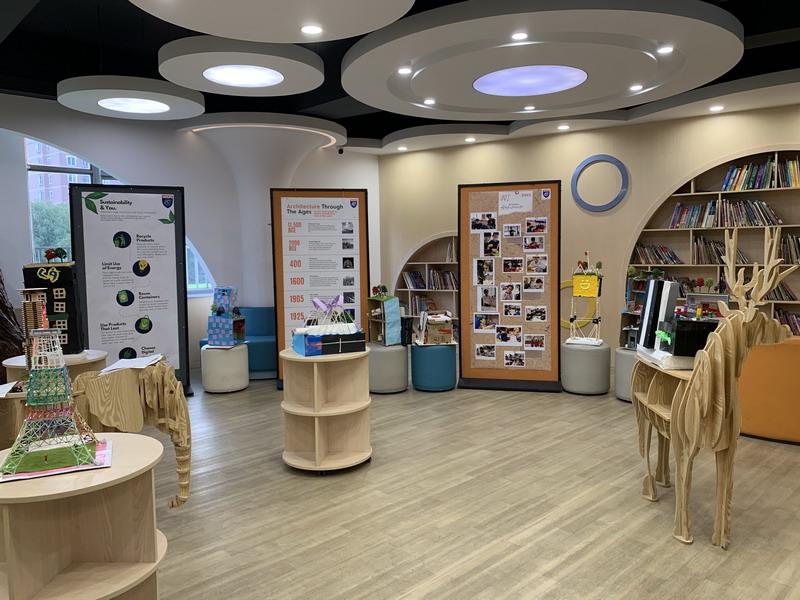
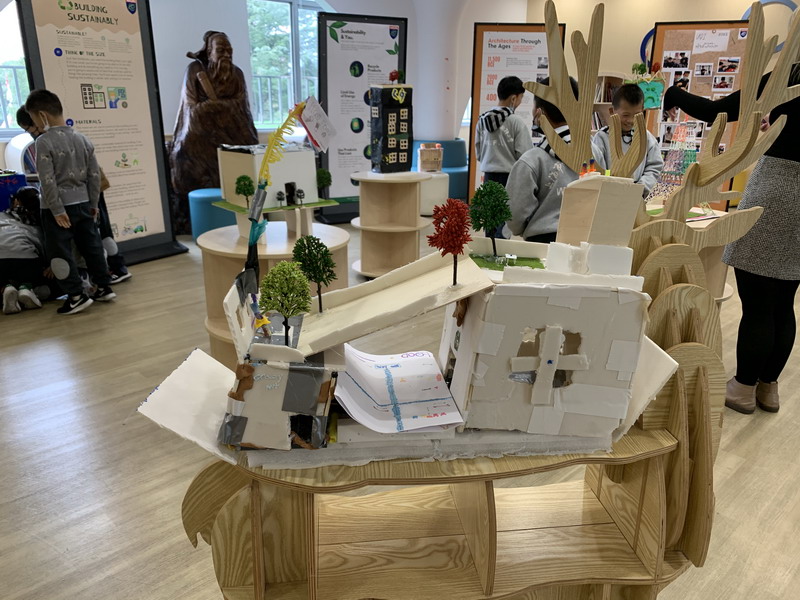
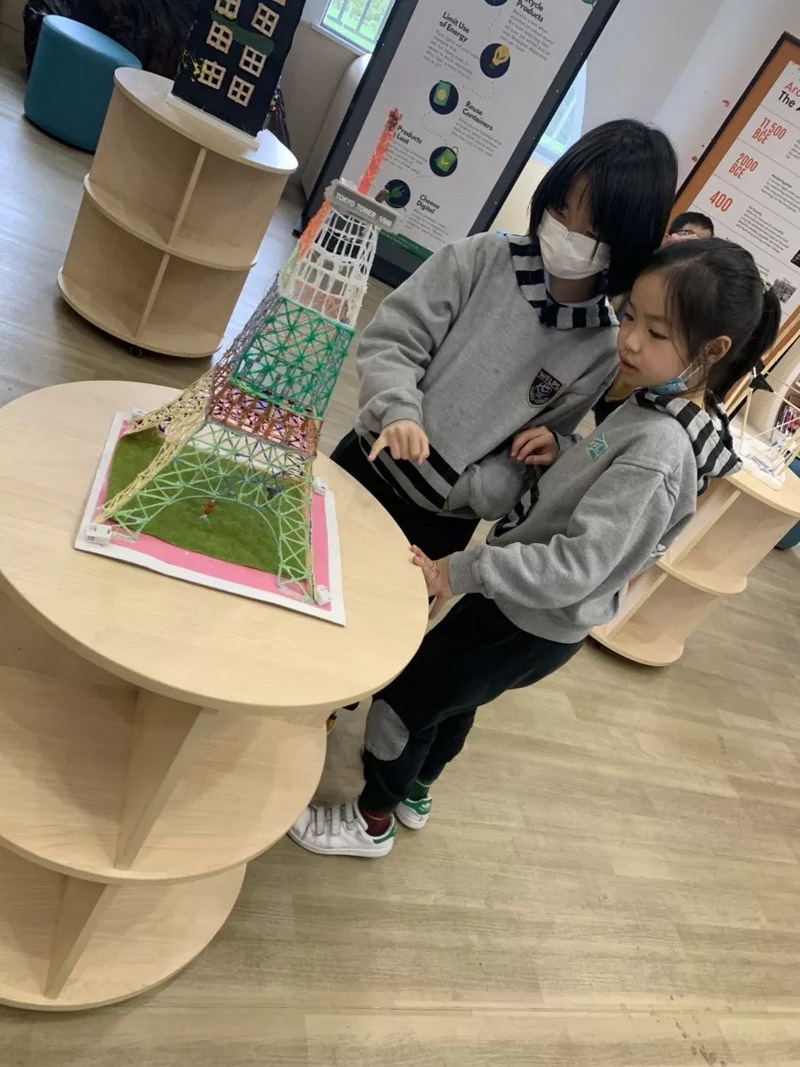
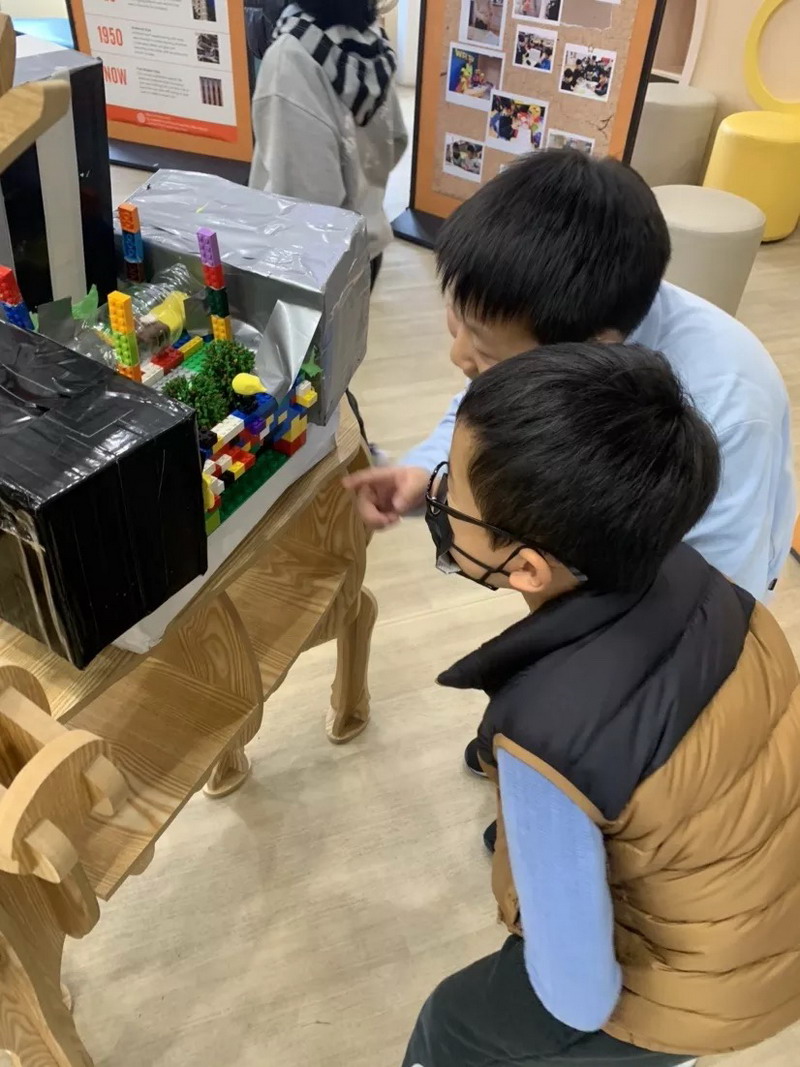
每一个探究单元都是一个跨学科综合学习过程。每个单元开始前各学科老师齐聚一起备课,尽量将各学科与探究课程相结合,为探究课程提供知识支撑,比如在学习建筑单元时,语文会进行建筑类的阅读或写作,数学课上将建筑与各种几何图形结合起来,艺术课上,讨论怎样通过添加艺术装饰来改善建筑设计……
Each unit is a learning process based around a trans-disciplinary theme. Before each unit, all the subject teachers gathered together to do the planner cooperatively. We tried our best to link with UOI and give support the unit. For example, while doing the Architect Unit, the Mandarin teachers assigned some reading and writing about architecture. During Maths lesson, they examined 3D shapes and where they are used in structures. The Art teacher facillitated a discussion about how to add decorations to improve the design of architecture.
探究课程是融合部的特色课程,希望孩子们能乐在其中,享受学习的快乐,体验成功的喜悦!
The Units Of Inquiry Underpin everything that is taught in the PYP Section. The teachers plan so that students can enjoy learning and experience success.


